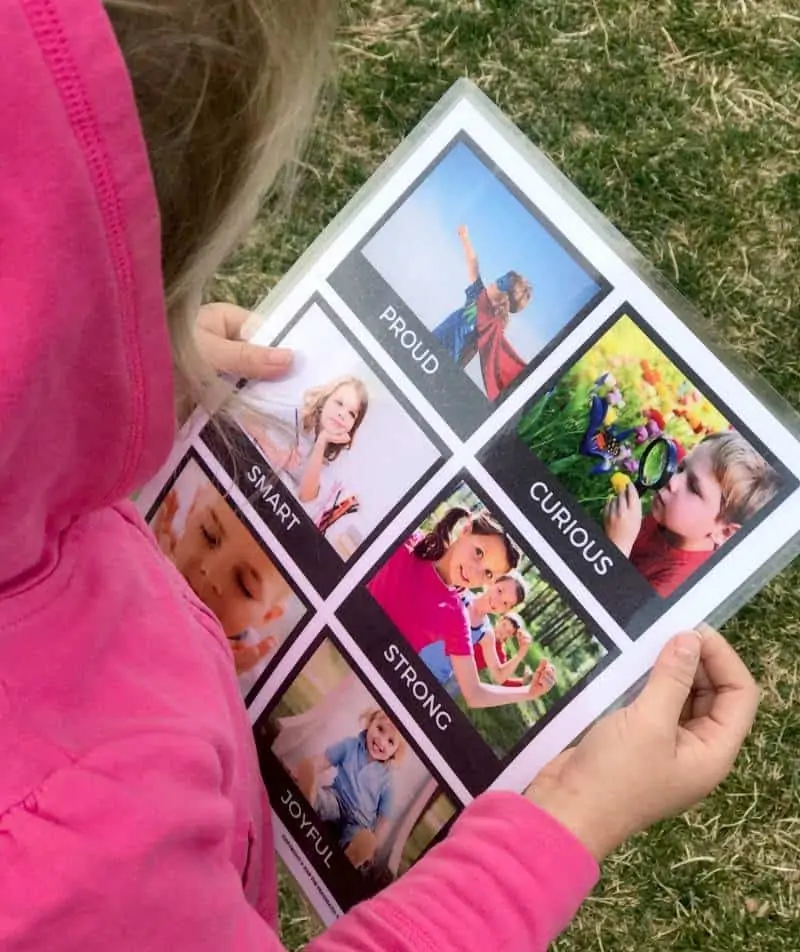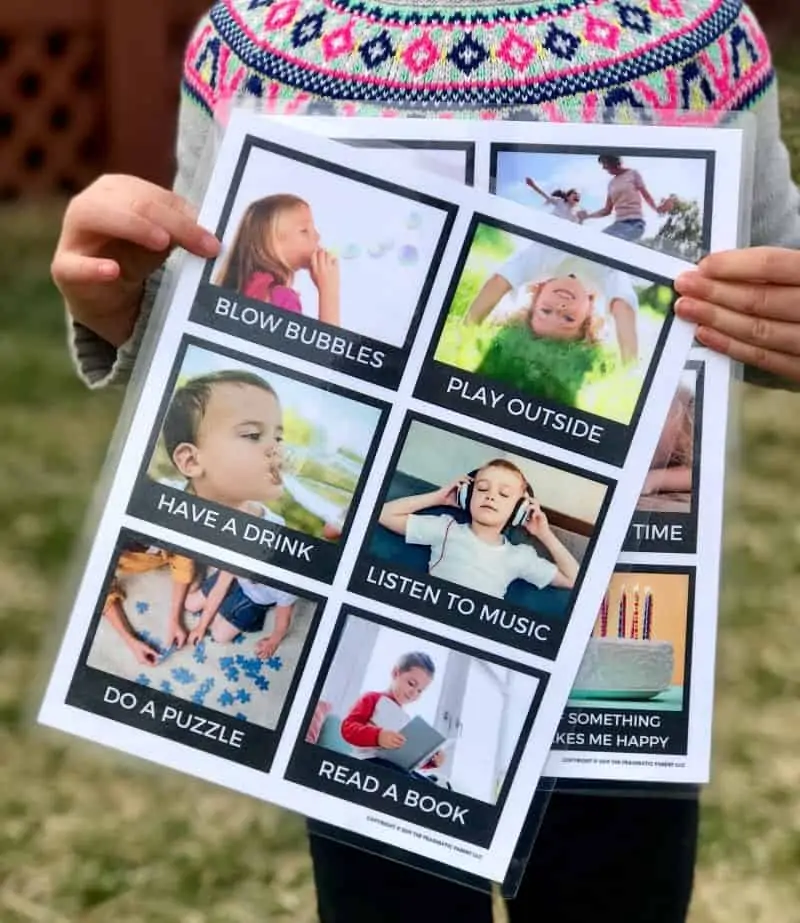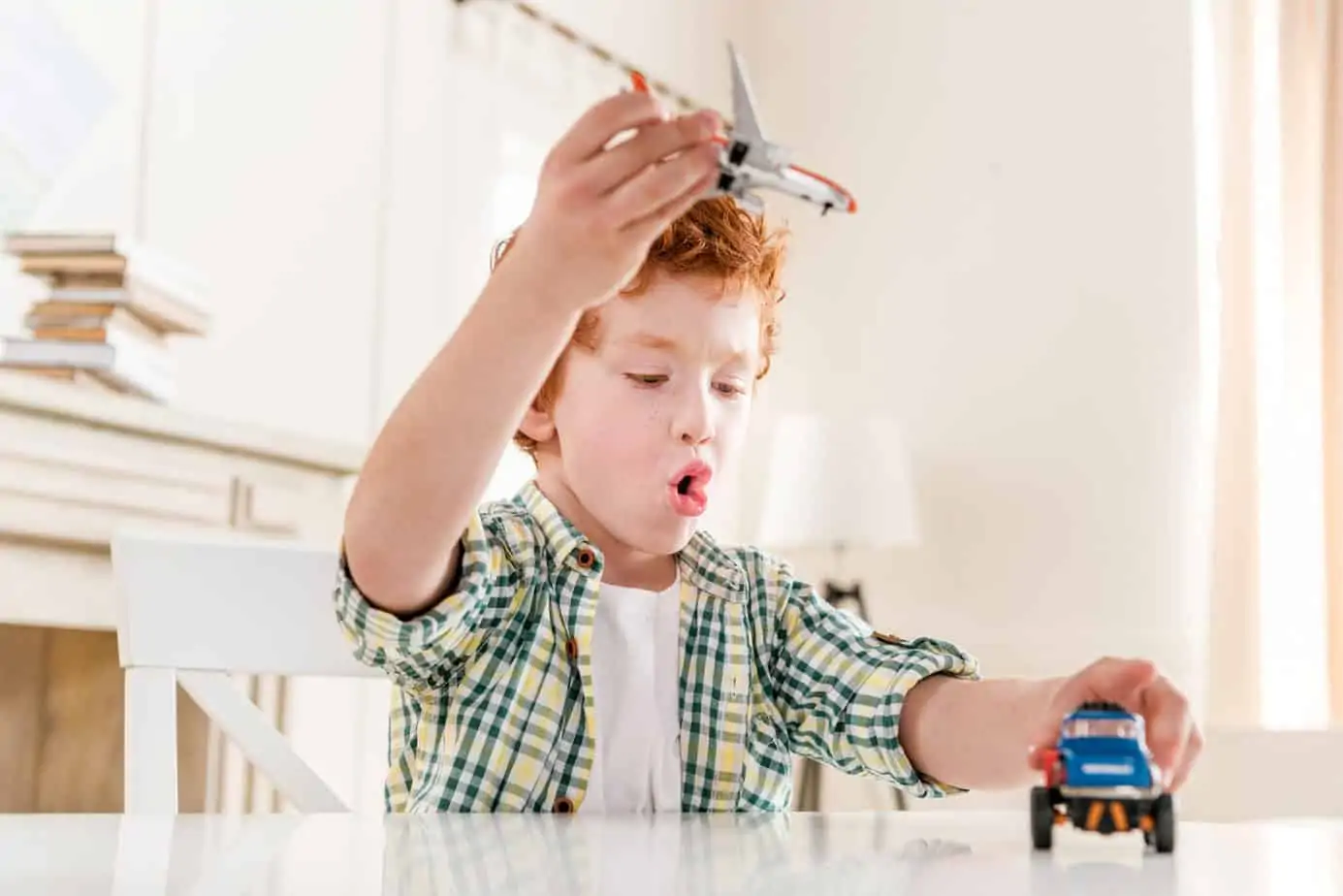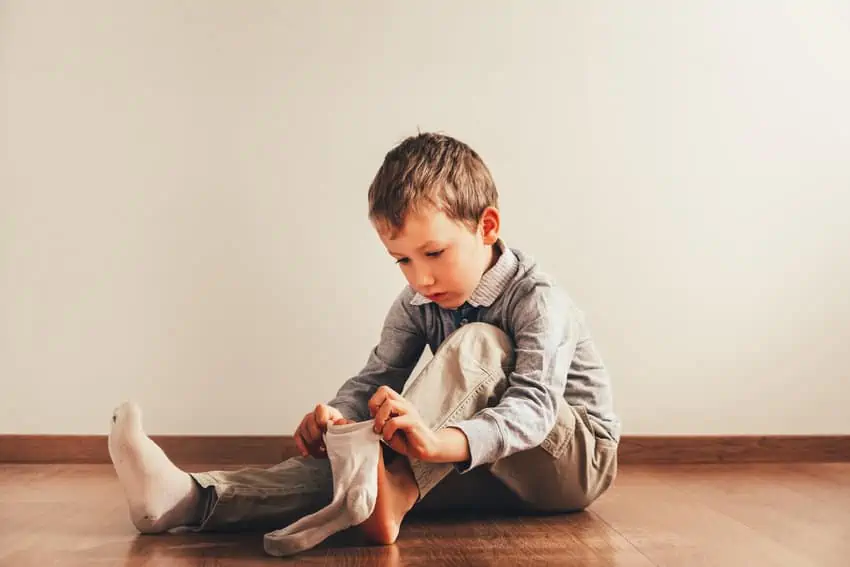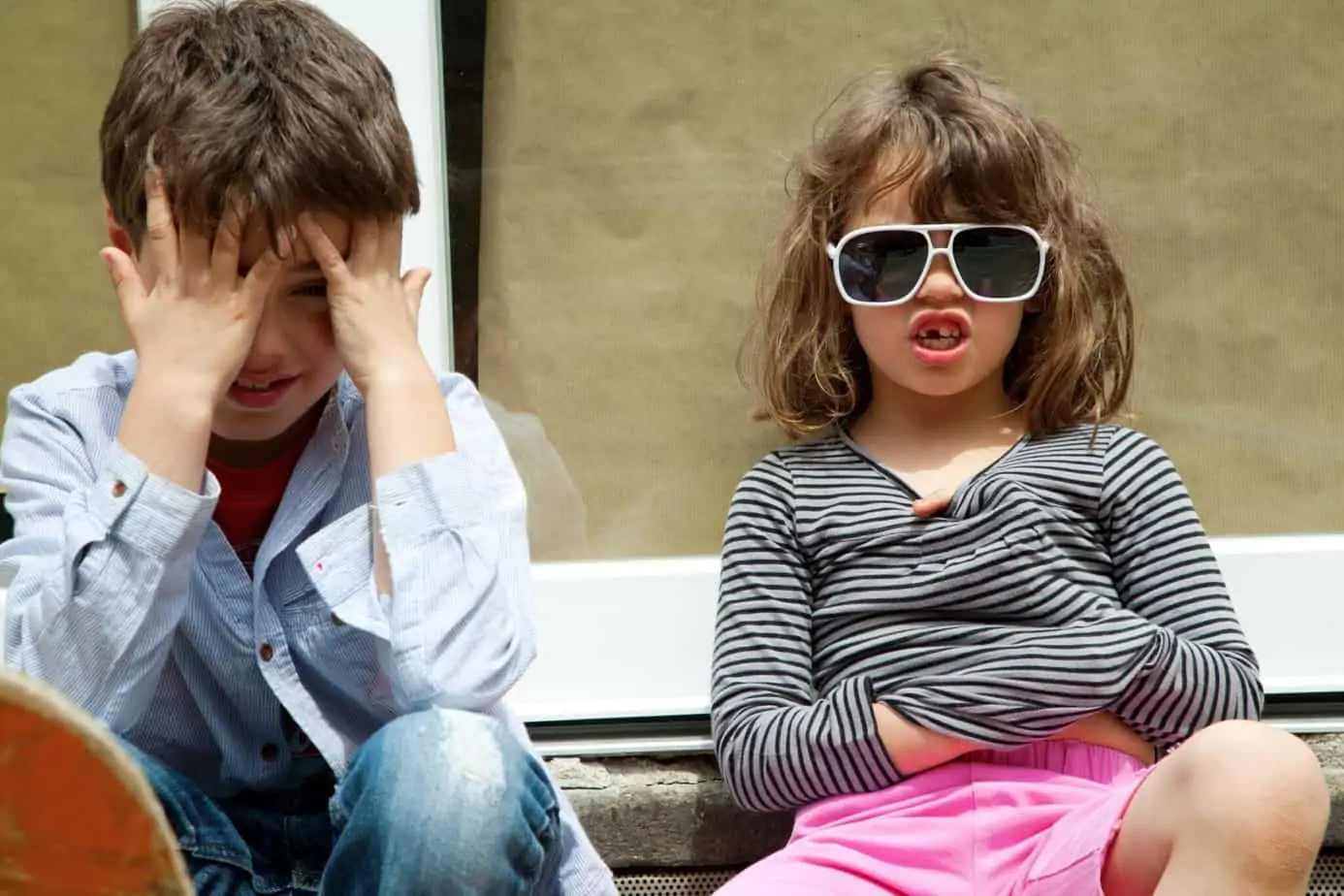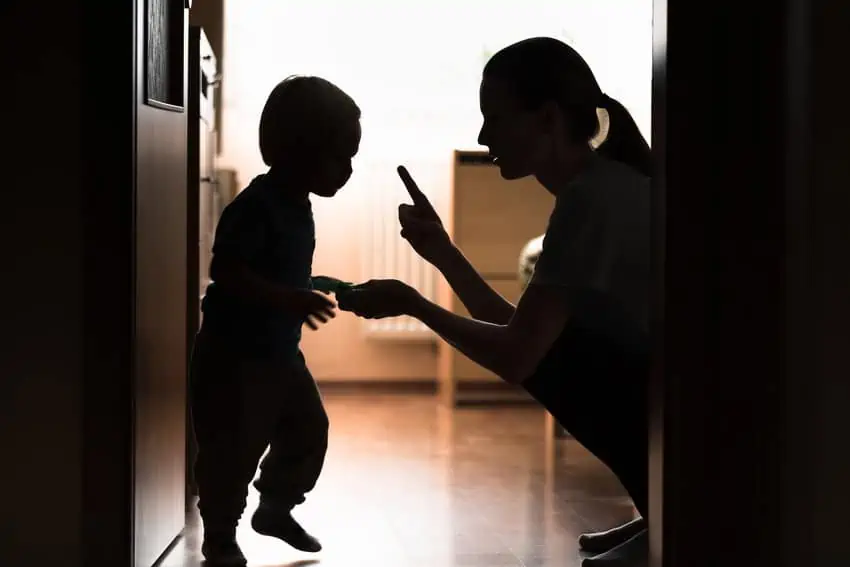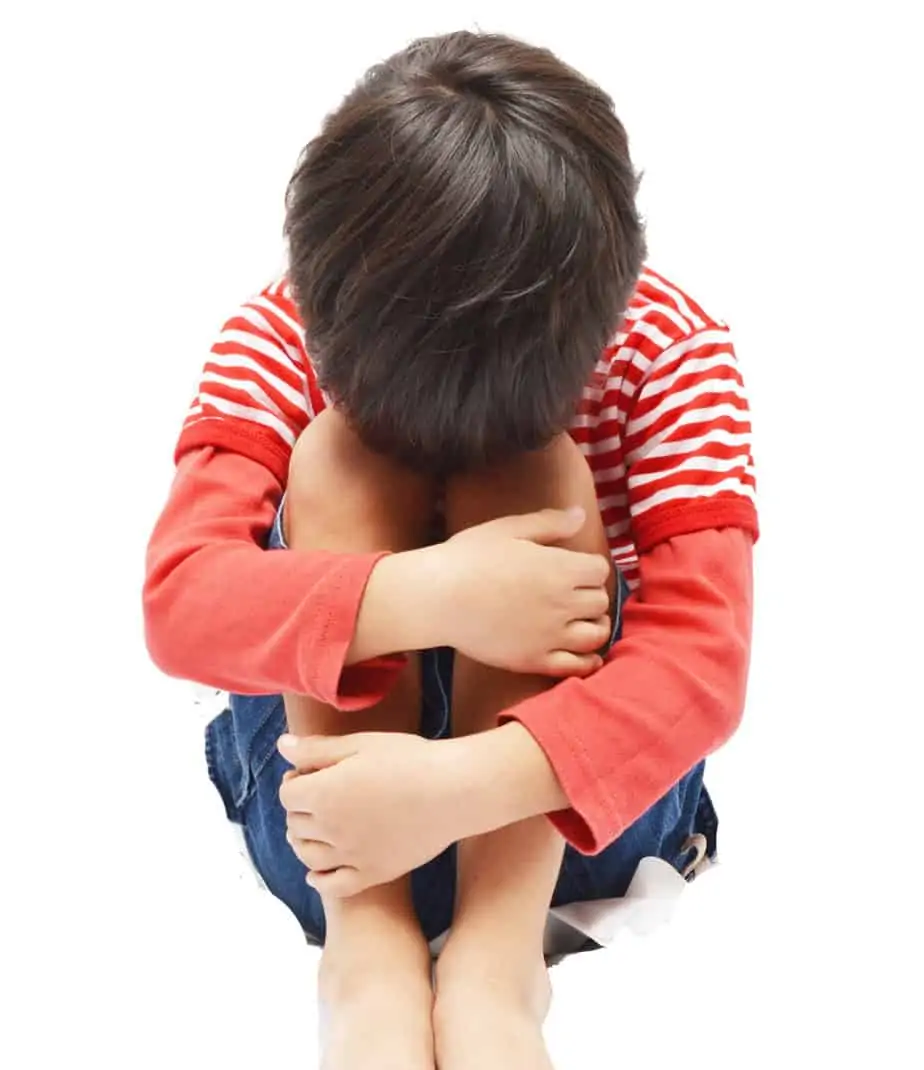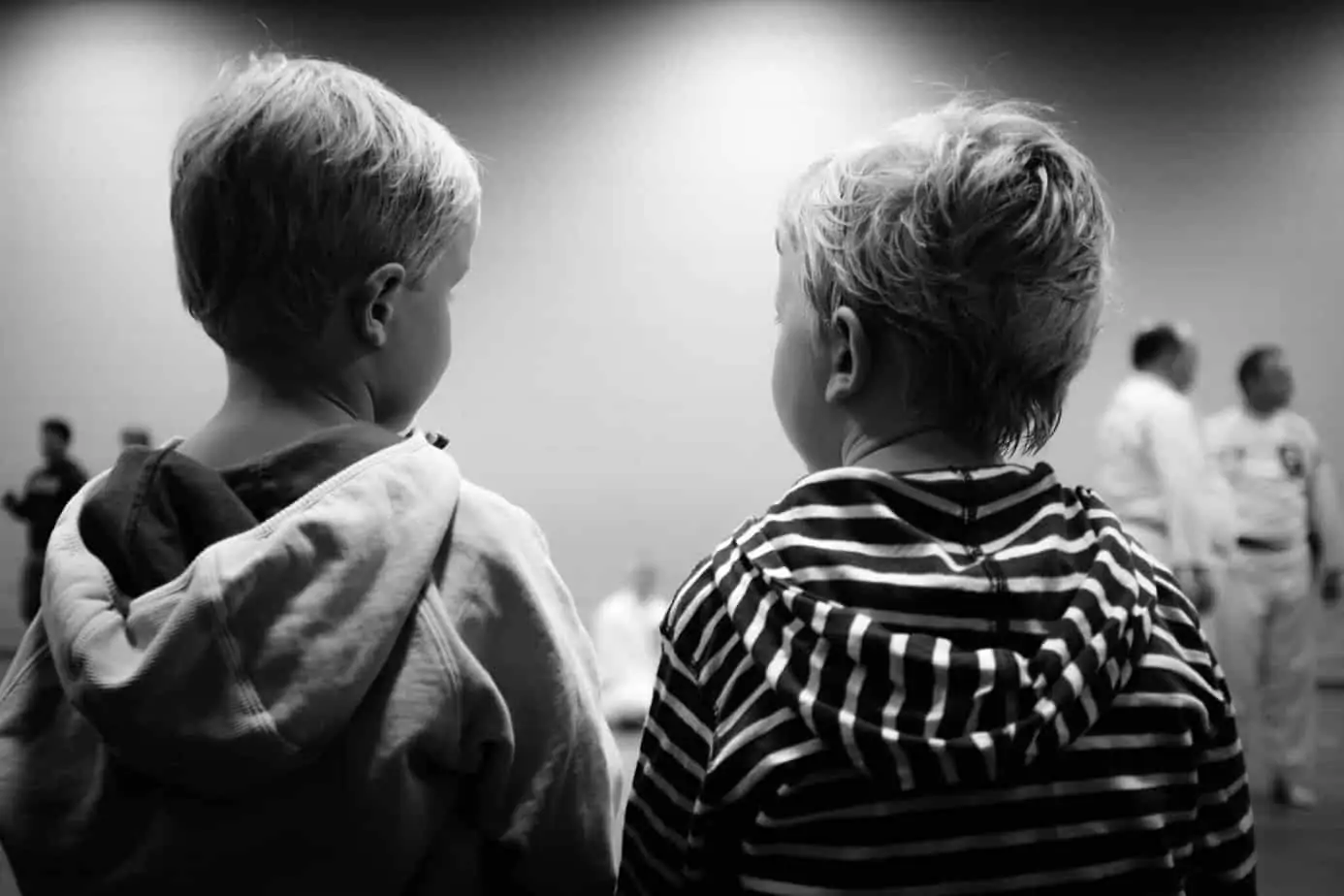How to help kids identify and express their emotions, and also manage those feelings while controlling their emotions in a healthy, respectful way. Why using Emotion identification tools and calm down techniques shown here can be a lifesaver!

Helping Kids Identify & Express Their Emotions
When your child is shouting, screaming, throwing a tantrum and exploding with big emotions, it can be a real battle to find ways to teach your children about emotions without losing your own cool.
Parents can struggle to help their children learn about feelings and how to appropriately express their emotions, especially toddlers whose frontal cortex isn’t fully developed yet (also the biological reason behind toddler tantrums.)
The benefits of teaching your children about feelings and helping them develop emotional intelligence aren’t only great for minimizing power struggles and tantrums, but a lifelong skill they’ll reap the rewards of in school, business, personal relationships and friendships.
One big benefit?
Children who learn self-regulation and how to control their emotions are shown to have longer attention spans, understand appropriate dynamics of interacting with others, are less impulsive, more self-aware and better communicators.
Let’s talk about how you can first teach children how to identify and express their emotions respectfully, and then strategies for control emotions especially when they want to burst out in unwelcome ways.
Want Help Supporting Your Child’s Big Emotions? Check Out These Resources:
Teaching Kids How to Control Emotions
-
Model Reactions and Emotional Behavior
Children look to their parents to be the prime example of how to act, behave and react.
Basically you are their role model for navigating life.
Children are also exemplary at mimicking the behavior and mannerisms they’re surrounded with, no matter if the behavior is good, bad, appropriate or inappropriate.
It’s important to practice what you preach which means instead of matching your child’s intensity with your own, you must be the rock-steady and calm your child needs.
Your “cool as a cucumber” response will teach your kids a better way to handle challenging situations, disappointment, and adversity than with big, explosive emotions.
The coping strategies you demonstrate will help your children develop their own coping strategies to main control and reel it in.
-
Talk About Emotions and Feelings with Kids
Children often feel overwhelmed by what they are feeling particularly because they don’t know what it is.
- What are emotions?
- What are feelings?
- What does this feeling I have mean?
- What is the emotion that matches this feeling?
- Why am I acting this way?
Butterflies in the tummy often equate to nervousness and clenched fists, anger. But does a child automatically know this?
The very simple answer is no they do not.
Emotion identification tools help kids identify, name, communicate their feelings and what’s going on under the surface.Children must learn the different kinds of emotions and how they relate to what you feel inside.
The best way to do this is to help name your child’s emotions as it matches their behavior.
- Crying = Sad
- Throwing a Toy = Anger
- Laughing = Joy
- Fear, Guilt, Happiness, Excited….
You can help your child identify facial expression in others and by watching themselves in the mirror, to recognize what behavior is saying.
You don’t just want to point out the negative behavior and reactions like being angry, sad, or upset. Also, point out the entire range of emotions including happy, excited, lonely, etc. so they learn all the emotions and can read body language.
Talk about your child’s emotions by having regularly conversations about feelings and using emotion picture cards to help kids identify what they’re feeling.
If your child is unable to name what they feel, help them by describing the emotion and pointing to the picture in the emotion picture card set, until they make the connection.
-
Identify Feelings of Others
Teaching emotional intelligence isn’t only about your child, it’s about modeling the connection between behavior and feelings for your children in a teachable way.
- When you feel frustrated, tell them.
- When you are happy, express it.
- When you feel angry, explain why you feel this way.
It’s important to help children learn to recognize feelings and emotions in others by reading facial expressions and also identifying body language. The emotion picture cards can help kids identify body language and cues in others too.
When kids can recognize the emotional state of others, they’ll be equipped to understand how to interact with others and communicate with them better.
-
4. Praise Behavior Your Want to See Repeated
When you watch your child catch themselves and walk back out of what could have been a tantrum or a big emotion situation, shout your praise from the rooftops!
Praising behavior tells kids the should repeat it because of the positive reinforcement you give them.
It’s like when your children first learn how to walk. When you sit on the sidelines and cheer them on, the more they want to try standing and walking towards you.
Positive praise works just like this to reinforce when your kids make good choices when it comes to behavior, too.
-
Notice When Environmental Factors Play with Emotions
There are a lot of environmental factors that come into play when a child experiences big emotions.
Help your child identify other reasons why they get off track or preemptively could get off track by looking at their surroundings.
The big four are:
- Sleep
- Food
- Overstimulation
- Connection
Most often, poor behavior and misbehavior are the result of being tired, being hungry or overstimulated. This can also be because of a lack of connect the child feels to you or another person they’re close to and acting out is a way to gain your attention.
The more in touch your child is with their feelings, the more connected they’ll be to their body and the instincts to rest, eat, chill out or ask for affection when their tank is on empty.
-
6. Coping Strategies to Control Emotions
Even if your child has identified triggers to their big emotions, they still need coping strategies to get the emotions under control.
Different coping strategies that are useful are:
- Create a calming / quiet retreat in your home when your child can retreat to be alone
- Listen to music (and dance if it helps)
- Take a bath
- Create! Draw, color, paint
- Drink a mug of something comforting like warm cocoa or apple cider
- Blow bubbles
- Squeeze a stress fall or play with fidget toys
Calm Down Resources:
- Anger Management: Calm Down Tools Kids Can Use Anywhere
- Parents: 5 Steps to Teach Kids How to Manage Big Emotions (Free Printable)
- Helping Kids with Transitions: Switching Gears without Tears
-
Be His Safe Spot Before & After Big Emotions
While the wave of big emotions rains down, the one thing your child needs is to know you are there and that you still love him.
Even if your child doesn’t want affection or your presence at the time, being there for your child gives him safety and lets him know you’re on his team. It also tells him you’re a safe place to share his feelings with once the meltdown has passed.
Match your child’s force with calm reassurance, and counter fury with empathy and gentleness.
If you match his intensity with your own, you can’t provide the safety net he depends upon you for. Whereas, if he feels helpless, out of control, exhausted and distraught, but you gently respond with empathy and understanding, he’ll be able to pull himself together after a good cry versus keeping the tantrum raging on long after it could have ended.
Soon, your child will become the master of his big feelings and emotions and the chaos will be evened out with more calm.
-
Use Calm Down Cards to Ease Big Emotions
Calm Down cards are a great tool to give kids options about how they can calm down, and when they have the choice of what they want to do, it’ll help them calm down even faster!
Print this set of calm down cards, laminate if you can, and let your child shuffle through the 45 cards until they find a solution they’re comfortable with.
There are 45 kid-tested methods that will help them cool off when big emotions take hold!
The best part?
With consistent practice of using the calm down card set, kids will turn to their set of calm down cards without any prompting from an adult and begin to self-manage their big feelings all on their own!
Additional Resource: 10 Fun games to help teach kids self-regulation skills
Need a little extra handling your child’s big emotions? Here’s a FREE Parenting Course to help you both turn things around.
Additional Calm Down Resources
- Create a Quiet Spot at Home For Your Child to Calm Down
- Helping Kids with Transitions: Switching Gears without Tears
- Navigating the After-School Meltdown: How to Help Your Child
- Anger Management: Calm Down Tools for Kids to Use Anywhere
- Help Your Children Understand Emotions and Develop the Emotional Intelligence They Need
Want even more?
Shop All Parenting Resources
Shop all of our parenting resources from self-regulation tools and managing big emotions to building self esteem and confidence. There are resources for all seasons of life!
